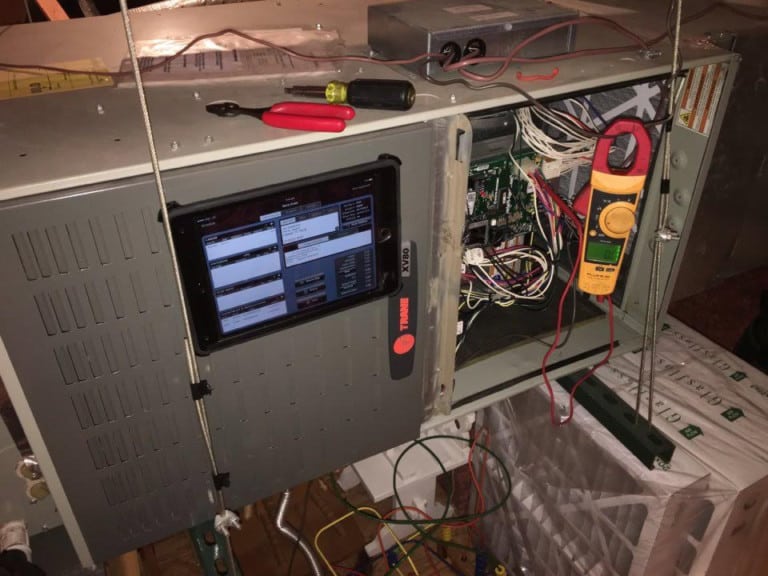As I am penning this article, the first cool snap of fall is moving into Collin County. Tonight we are expected to see temperatures in the 50s, something we have not experienced in several months. Fall brings not only cooler temperatures but also football, the changing of the leaves, Halloween and Thanksgiving, and FURNACE TUNE UPS!
I wanted to use this space to clarify the facts regarding furnace tune-up, furnace safety, and the less-than-truthful warnings surrounding carbon monoxide. Furnaces are no different than most all fuel-consuming equipment; they produce carbon monoxide as a byproduct of combustion.
During normal operation, all carbon monoxide exits the home via the flue pipe which one can liken to your vehicle’s tailpipe. It is a sealed pipe designed to contain and route the exhaust or byproducts of combustion safely away from the occupied space.
Carbon Monoxide Leakage — A Hole in Furnace Safety?
For many years, HVAC professionals have provided false information regarding this deadly odorless gas because of either a lack of knowledge or an intentional attempt to deceive and sell equipment. A furnace should not ever leak or emit carbon monoxide if it is installed correctly and in good repair. But many furnaces have been condemned for leaking carbon monoxide without positive confirmation. Common causes for carbon monoxide leaks are:
- improper draft/combustion air
- unprofessional furnace tune up
- worn/faulty draft inducer motors
- improper flue pipe connections/fitment
- the dreaded cracked heat exchanger
Why is a Furnace Inspection Important to Confirm a Cracked Heat Exchanger?
Cracked heat exchangers have been the most overused and misunderstood furnace failures for the last 30 years. Yes, prior to the “aughts”, heat exchangers were made of several different materials that did in fact rust, crack, and fail; but the vast majority of furnaces installed in the last 20 years do not see these problems as the result of better design and materials.
This is evident by the warranties carried by premium equipment such as American Standard that guarantee heat exchangers for 25 years up to the entire lifetime of the furnace! Yes, heat exchangers do still develop leaks and will in some instances crack, but there is NO means of confirming a compromised heat exchanger other than POSITIVE VISUAL CONFIRMATION.
There are not any instruments, tools, or tests that can prove beyond doubt that a heat exchanger has failed. A furnace must either be disassembled in order to inspect the heat exchanger or any holes or cracks must be discovered through the use of telescopic video cameras to see the furnace’s internals.
It really is that simple. HVAC professionals many times rely on clues and information provided by two or three procedures or instruments in order to diagnose a problem, but in the case of carbon monoxide and faulty heat exchangers, seeing is believing.
If you or anyone you know experiences the “carbon monoxide leak” diagnosis, it’s time to get a furnace tune up. You just have to show where the leak is. If a technician cannot adequately show you the crack or hole during the furnace service; KEEP CALM and CALL CLASSIC!




